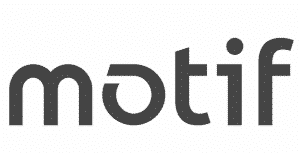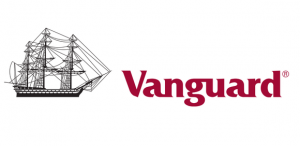

Successful investing can seem like a conundrum because some of the richest investors allocate their money differently to how most retail investors do. Famed investor Warren Buffett advocates most investors to diversify their holdings. Yet he allocates capital to a concentrated portfolio of companies, stocks, and even derivatives. If many of the richest and most successful investors in the world don’t diversify their investment portfolios, why should you?
Making big money investing requires at the very least a combination of expert insight, extensive research, good timing, and a dollop of good luck. Very few investors successfully beat the market year after year.
Research shows that, over time, most fund managers fail to beat the market continually. A big reason for that failure is most investors attempt to time the market, entering and exiting when they believe the market will pop higher or fall lower.
Sometimes their opinions are wrong and sometimes they simply get emotional, entering too late because they get greedy and exiting too soon because they get fearful, resulting in lost opportunities and unnecessary portfolio losses.
If beating the market seems like a frightful endeavor to overcome the hurdles of emotion, luck and timing, take solace that wealth can be accumulated without acquiring the investing skills of billionaire investors.
In fact, some of the richest investors in the world advocate that most people don’t attempt to beat the market but instead diversify their portfolio holdings. When you diversify your investments, you can still optimize expected returns for your risk profile and avoid the heartaches and headaches of attempting the near impossible feat of beating the market.
The Basics Of Diversification
When you diversify holdings in a non-retirement, IRA or 401(k) account, you invest in a combination of asset classes, such as stock, bonds, and commodities to spread risk and reduce portfolio volatility.
To diversify your investments means to allocate your money across different asset classes, such as stocks, bonds, mutual funds, exchange-traded funds and commodities.
Asset classes have different return and risk profiles. Investing only in stocks may historically have produced the greatest long-term returns, but the volatility is generally higher than in fixed-income investments, such as government, corporate or municipal bonds.
While everyone might strive for the same end goal to maximize returns over time, not everyone will have the risk tolerance to hold onto stocks through economic cycles. During turbulent times, it can be difficult to watch your portfolio gyrate.
For this reason, spreading your risk across multiple asset classes is considered the smart way to diversify and lower risk, especially when allocating your money to retirement accounts, such as an IRA.
By allocating some of your portfolio to equities and some to fixed-income investments, such as corporate bonds, you get to lower your risk compared to holding equities alone. The reason is that bond prices on average tend to fluctuate much less than stock prices.
Instead of your portfolio spiking up or down on any given day, the swings one way or the other tend to be less exaggerated when you diversify, allowing you to perhaps sleep a little better at night.
Index funds, exchange-traded funds and even many robo-advisors allow you to easily allocate your money to a diversified portfolio but how do you manage risk?
How To Manage Risk When Investing In A Diversified Portfolio
When you diversify investments across assets classes, you remain exposed to market risks and asset risks. Financial research called Modern Portfolio Theory is used by most robo-advisor firms, such as SoFi, Wealthfront and Betterment, and forms the foundation of their investing methodologies.
This research, which is premised on diversifying risk across asset classes, has shown that portfolios can be optimized for expected returns based on risk profiles.
The holy grail in investing is to grow your invested capital risk-free. Some of the smartest investors in the world have failed trying to find the proverbial pot of gold at the end of the rainbow, such as the infamous team at the hedge fund, Long-Term Capital Management, who famously blew up their own fund and nearly the world’s economy – though the story of their endeavors, When Genius Failed, makes for a riveting read. Alas, risk-free investing remains a phantom idea that is still unattainable.
To generate a return on your invested assets, some risk must be assumed.
A big idea proposed by Harry Markowitz, who influenced the investing methods of most institutional investors, financial advisors, and robo-advisor firms, is that risk-averse investors can construct portfolios to optimize or maximize expected return based on a given level of risk.
The shortcut takeaway is that you cannot remove risk but you can seek to diversify away risk, albeit with the drawback of lowering your portfolio’s return potential.
The general rule of thumb to lower risk in a portfolio comprised of stocks and bonds is to choose a lower weighting of stocks and a higher weighting of bonds.
Conservative investors or investors with short time horizons to retirement generally look to diversify risk by allocating capital across multiple asset classes, albeit with a greater allocation towards fixed-income investments, such as government, corporate or municipal bonds.
Investors who can tolerate more risk or those with longer time horizons often favor a higher composition of stocks in their portfolios in the hopes of boosting long-term returns.
When you are considering which assets to invest in for your retirement account, such as a Roth IRA or traditional IRA, the primary risks for your portfolio are the risks associated with the market and with the assets selected. All markets have levels of risk associated with them, even cash markets.
For example, most money market funds have a net asset value of $1, but if the value falls below a dollar, it’s called breaking the buck – a very rare phenomenon, but it has happened from time to time during periods of very high volatility.
Most investors are aware that the stock market has inherent risks, but it is not so apparent that government bonds also have risk, albeit low, associated with them.
The risk spectrum increases from government bonds to corporate bonds.
The asset class of commodities is famously volatile because geopolitical tensions, supply shortages, or war can cause rapid spikes in the price of oil, gold and other commodities.
Stock market investors are exposed to the risks of specific companies, which may be related to seasonal patterns of consumer purchasing, such as around holiday periods.
Specific industries will have their own inherent risks, for example in the pharmaceutical industry, a drug approval by the Federal Drug Administration can lead to blockbuster share price gains.
On the other hand, the departure of a respected CEO or the disclosure of accounting errors or irregularities could lead to spikes lower in share prices.
The bottom line is that while the holy grail of risk-free investing doesn’t exist, the best way to mitigate market risks and asset-specific risks is to construct a diversified portfolio that is aligned with your risk profile.
Mr. Market is fickle and emotional... After ten years of going up in a nearly unbroken line, he abruptly decided to reverse course...
And usher in a bear market that has crushed portfolios — But while most investors were going through the worst year since the Global Financial Crisis...
A small group of 3,700 people had the chance to collect instant "bonus payouts" courtesy of Mr. Market every week.
All thanks to a method most investors have no idea about… watch this demo showing how it works.
How To Build A Diversified Portfolio
Mutual funds, exchange-traded funds and even innovative companies, such as Motif, make it easy to create a diversified portfolio as part of a self-managed account. For investors who want the process of selecting funds that form a diversified portfolio handled for them, a robo-advisor is a good option.
Building a diversified portfolio is easier than it might seem at first glance. If you had to do all the work of researching assets and asset classes, you might quickly become overwhelmed.
Thankfully, the hard work of creating diversified assets has been done for you by mutual fund companies, providers of exchange-traded funds and even innovative companies, such as Motif, which lets you create your own composition of equities to form a motif.
| MOTIF SPOTLIGHT | |
 InvestorMint Rating 4.5 out of 5 stars |
|
If you choose to create your own diversified portfolio, pay close attention to how heavily weighted the portfolio is in stocks and bonds. A heavy weighting in equities might unpleasantly surprise you when the market corrects lower.
Even if you choose an off-the-shelf exchange-traded fund or mutual fund from a renowned broker, such as Schwab or a low-fee fund provider, such as Vanguard, be diligent about assessing your portfolio risks. If the portfolio composition is heavily skewed towards equity funds, consider diversifying the risk with a fixed-income mutual fund or an exchange-traded fund.


If it feels intimidating to research equity and fixed-income funds yourself, a robo-advisor can do it for you at much lower cost than most traditional human financial advisors.
A robo-advisor is a type of financial advisor that provides portfolio management services with little human intervention. Computer algorithms power the selection of funds chosen for your portfolio based on risk and goal assessments you complete when you sign up.
If you are not too familiar with robo-advisors, it is well worth exploring. The robo-advisor industry is well-established: many of the top tier robo-advisory firms have already accumulated billions of dollars in managed assets. Most of the major brokerage houses, such as Schwab and Fidelity, have their own robo-advisor offerings and compete on price and service with established industry leaders, such as Betterment and Personal Capital – this competition among robo-advisor heavyweights is great for you the consumer as fees decline and service improves.
Among the most competitive robo-advisors on fees are SoFi and Schwab Intelligent Portfolios. Schwab was the first robo-advisor to surpass $10 billion in managed assets and it’s clear why so many investors have flocked to Schwab when you discover they charge no fees for managing your portfolio; the catch is your portfolio will include mostly Schwab funds, which have expense ratios from which they make money.
These expense ratio charges are reasonable and just about every robo-advisor will pass on expense ratio charges to clients. SoFi also makes a compelling offer to new clients: the first $10,000 of assets are free from management fee charges. And thereafter a charge of 0.25% is applied to managed assets.


Both robo-advisors leverage technology to automatically create diversified portfolios for you based on your risk tolerance and financial goals. Most robo-advisors will automatically rebalance your portfolios, some as often as daily, to ensure your portfolio remains diversified. If you would like to compare robo-advisors, take a peek at this snapshot comparison table.
Any one of the robo-advisors above can create a diversified portfolio for you using technology-powered algorithms. The choice between one over another comes down to your own preferences, for example whether you care more about having access to human financial advisors as are available at Personal Capital, or building a tax-optimized portfolio as Wealthfront offers.
The early bird gets the worm and the options trader who waits until 9:30EST can win big! Hi, I'm Dave Aquino and if you're new to options trading, my e-book "How To Master the Retirement Trade" will show you exactly how to take advantage of this early morning, profitable, but often overlooked window of trading time.
Download your copy today and let's get started!














